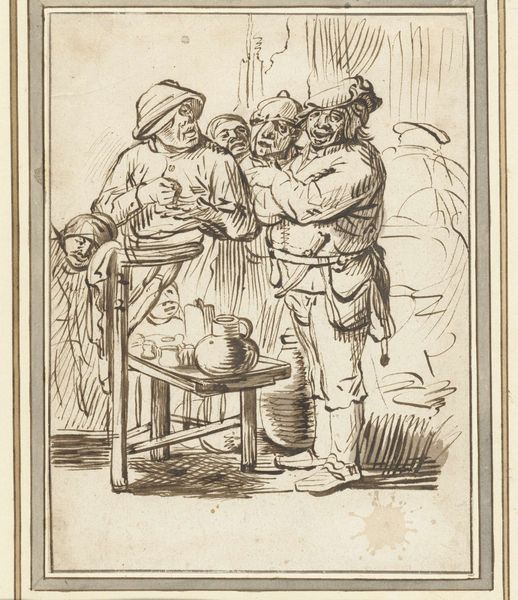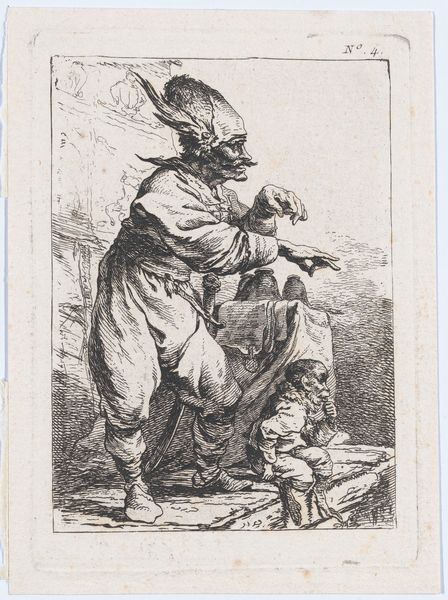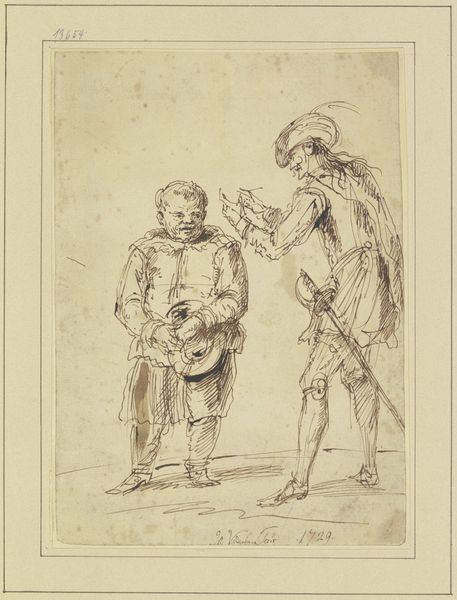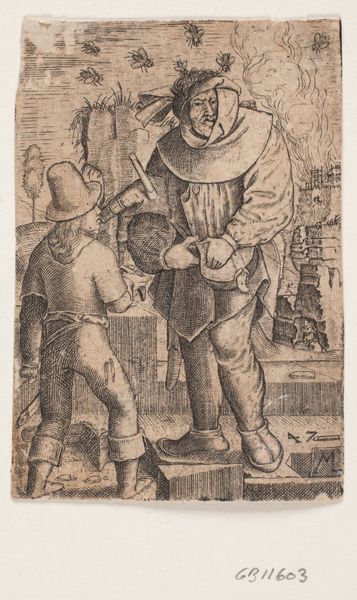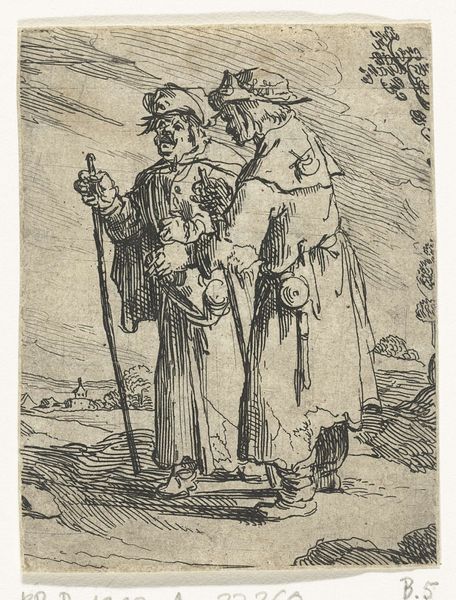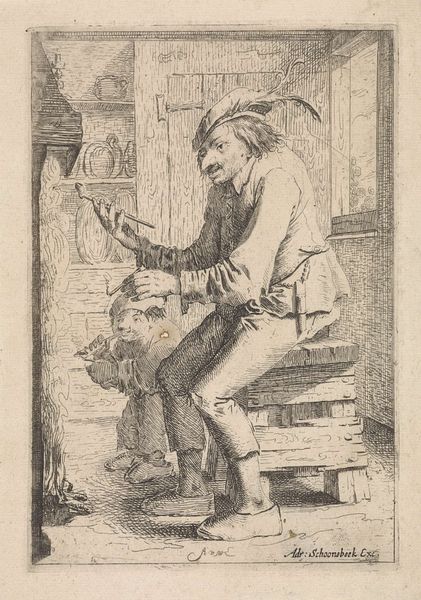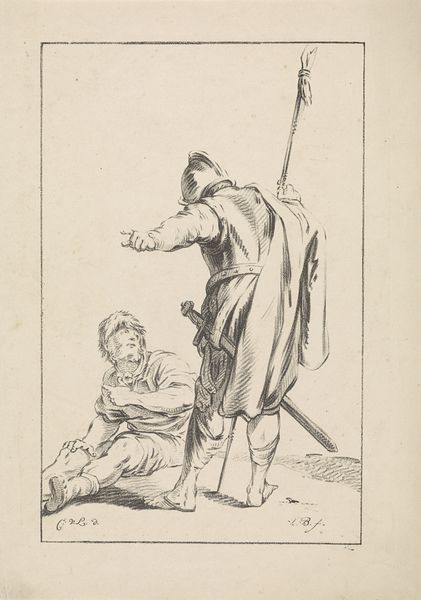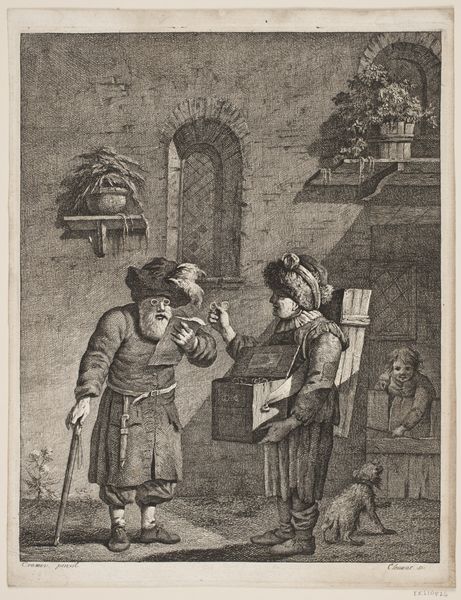
A Monk with a Carrot and a Woman with a Chamber Pot 17th century
0:00
0:00
drawing, print, etching
#
portrait
#
drawing
#
baroque
# print
#
etching
#
caricature
#
men
#
portrait drawing
#
genre-painting
Dimensions: 11 x 7 7/8 in. (28 x 20 cm)
Copyright: Public Domain
Editor: This etching from the 17th century, "A Monk with a Carrot and a Woman with a Chamber Pot," by Pier Leone Ghezzi, has such an odd, almost unsettling quality to it. The figures are so expressive and peculiar! What do you make of this unusual scene? Curator: The caricature holds significant social weight. The artist seems interested in subverting the status quo. Consider the positioning of the monk, traditionally a figure of power. Ghezzi has rendered him almost grotesque, brandishing a carrot like a weapon. What does this say about institutional authority? Editor: It feels like a mockery of the Church, perhaps questioning its moral authority? The carrot seems like an absurd symbol, in contrast with the chamber pot carried by the woman. Curator: Precisely. This print also uses the tools available to the artist. Caricature as a medium allowed Ghezzi to use satire as a way of cutting through the veneer of respectability. Do you see how it implicates ideas about gender roles too? Editor: I guess the woman with the chamber pot would represent one of the working classes, maybe even poking fun at stereotypes about women and their social roles? Curator: Absolutely! This goes to show how even seemingly simple images offer avenues for examining broader systems of power, privilege, and representation. By depicting such a peculiar and seemingly off-kilter encounter, Ghezzi pushes us to reconsider our own preconceived notions and challenge established hierarchies. It's interesting how he plays with societal norms and uses humour to unpack sensitive issues. Editor: I didn't realize how much social commentary could be packed into a funny drawing like this. It makes me think differently about art's role in social change! Curator: And how humor can be a form of subversive activism.
Comments
No comments
Be the first to comment and join the conversation on the ultimate creative platform.
